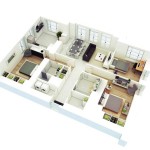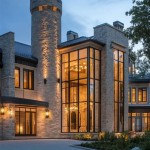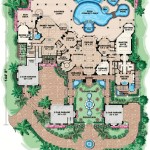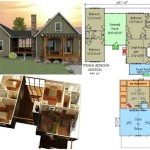Bunk house plans refer to architectural drawings that outline the construction and design of a bunk house, which is a specialized type of building designed to accommodate multiple individuals in a shared living space. These structures are commonly utilized in various settings, such as summer camps, military barracks, and construction sites, where temporary or communal housing is required.
The primary purpose of bunk house plans is to provide low-cost and functional living arrangements for large groups. They typically feature simple and efficient layouts, with dormitory-style sleeping quarters that consist of bunk beds or cots. Additional amenities may include shared bathrooms, showers, and common areas for gathering and dining.
Moving on, we will delve deeper into the key considerations and essential elements of bunk house plans, exploring their benefits and suitability for different applications. We will also provide valuable tips and insights to assist you in selecting and designing the ideal bunk house for your specific needs.
Here are nine important points to consider when creating bunk house plans:
- Layout efficiency
- Bedding arrangements
- Ventilation and lighting
- Sanitation facilities
- Storage space
- Common areas
- Accessibility features
- Sustainability
- Cost-effectiveness
When designing bunk house plans, it’s essential to prioritize these elements to ensure the comfort, well-being, and safety of the occupants.
Layout efficiency
In bunk house plans, layout efficiency is of paramount importance, as it directly impacts the functionality and comfort of the living space. A well-designed layout optimizes the use of space, ensuring smooth traffic flow and easy access to all areas of the bunk house.
To achieve layout efficiency, consider the following strategies:
- Maximize vertical space: Utilize bunk beds or loft sleeping arrangements to create additional sleeping capacity without sacrificing floor space.
- Create clear pathways: Ensure unobstructed walkways between sleeping quarters, bathrooms, and common areas to prevent congestion and accidents.
- Position amenities strategically: Place bathrooms, showers, and storage areas in central locations for convenient access from all sleeping quarters.
- Optimize natural light: Design the bunk house with ample windows to maximize natural lighting, reducing the need for artificial lighting and creating a more inviting atmosphere.
By implementing these strategies, bunk house plans can achieve optimal layout efficiency, resulting in a comfortable and functional living environment for occupants.
Bedding arrangements
Bedding arrangements play a crucial role in bunk house plans, as they determine the sleeping capacity and comfort of the occupants. Careful consideration must be given to the type, size, and layout of bedding to ensure a restful and comfortable sleeping environment.
- Bunk beds: Bunk beds are a popular choice for bunk house plans due to their space-saving design. They allow for multiple sleeping levels, maximizing the use of vertical space. Bunk beds are available in various sizes and configurations, including single over single, single over double, and double over double.
- Loft sleeping: Loft sleeping involves creating a raised sleeping platform, typically accessed by a ladder. This design frees up floor space below, allowing for additional seating, storage, or activity areas. Loft sleeping is particularly suitable for bunk houses with high ceilings.
- Individual beds: In some cases, individual beds may be preferred over bunk beds or loft sleeping. This arrangement provides more privacy and personal space for each occupant. Individual beds can be arranged in various layouts to suit the specific dimensions and shape of the bunk house.
- Mattress selection: The choice of mattresses for bunk house plans is essential for ensuring comfort and support. High-quality mattresses that provide adequate firmness and pressure relief should be selected to promote restful sleep for the occupants.
By carefully considering these bedding arrangements, bunk house plans can create comfortable and functional sleeping quarters that meet the needs of the occupants.
Ventilation and lighting
Ventilation and lighting are essential considerations in bunk house plans, as they directly impact the health, comfort, and well-being of the occupants. Proper ventilation ensures a constant supply of fresh air, removing stale air, moisture, and odors. Adequate lighting, both natural and artificial, creates a comfortable and productive living environment.
To achieve effective ventilation in bunk house plans, consider the following strategies:
- Cross-ventilation: Design the bunk house with windows and vents on opposite walls to promote cross-ventilation. This allows for the natural circulation of air, reducing the buildup of stale air and moisture.
- Mechanical ventilation: In cases where natural ventilation is insufficient, mechanical ventilation systems can be installed to provide a controlled supply of fresh air. These systems can include exhaust fans, air conditioners, or heat recovery ventilators.
- Air quality control: Implement measures to control air quality, such as using air filters and avoiding the use of materials that emit harmful pollutants.
Regarding lighting, bunk house plans should incorporate a combination of natural and artificial lighting to create a well-lit and inviting environment. Natural lighting can be maximized through the use of windows and skylights. Artificial lighting should be carefully designed to provide sufficient illumination without creating glare or excessive shadows.
By carefully considering ventilation and lighting in bunk house plans, a healthy, comfortable, and productive living space can be created for the occupants.
Sanitation facilities
Sanitation facilities are a crucial aspect of bunk house plans, as they directly impact the health and well-being of the occupants. Proper sanitation facilities include toilets, showers, and handwashing stations, and they must be designed to meet the specific needs and capacity of the bunk house.
When planning sanitation facilities for bunk house plans, consider the following key elements:
- Number and type of fixtures: Determine the appropriate number and type of fixtures based on the occupancy and usage patterns of the bunk house. This includes toilets, urinals, showers, and sinks.
- Layout and privacy: Design the layout of the sanitation facilities to ensure privacy and comfort for the users. Consider separating toilets and showers into individual stalls or cubicles.
- Ventilation and lighting: Provide adequate ventilation and lighting in the sanitation facilities to prevent moisture buildup and ensure a clean and hygienic environment.
- Accessibility: Ensure that the sanitation facilities are accessible to all occupants, including those with disabilities. This may involve installing grab bars, ramps, and accessible showers.
In addition to these key elements, consider the following best practices for sanitation facilities in bunk house plans:
- Use durable and easy-to-clean materials: Choose materials for the floors, walls, and fixtures that are durable, non-porous, and easy to clean and disinfect.
- Provide proper drainage: Ensure that the sanitation facilities have proper drainage to prevent water accumulation and moisture buildup.
- Implement regular cleaning and maintenance: Establish a regular cleaning and maintenance schedule to keep the sanitation facilities clean and hygienic.
By carefully considering these factors, bunk house plans can incorporate sanitation facilities that meet the needs of the occupants and promote a healthy and comfortable living environment.
Storage space
Storage space is an essential consideration in bunk house plans, as it allows occupants to store their personal belongings, bedding, and other items in an organized and efficient manner. Well-designed storage solutions can help to maintain a clean and clutter-free living environment, contributing to the overall comfort and well-being of the occupants.
When planning storage space in bunk house plans, consider the following key elements:
- Type of storage: Determine the appropriate types of storage solutions based on the needs and usage patterns of the occupants. This may include lockers, shelves, drawers, and closets.
- Capacity and size: Calculate the required storage capacity based on the number of occupants and the anticipated amount of belongings. Consider providing a variety of storage options to accommodate different item sizes.
- Location and accessibility: Position storage units in convenient locations that are easily accessible to the occupants. Avoid placing storage units in walkways or other areas where they may obstruct movement.
- Durability and security: Choose storage units that are durable and secure to protect the belongings of the occupants. Consider using lockable storage units or lockers to provide additional security.
In addition to these key elements, consider the following best practices for storage space in bunk house plans:
- Maximize vertical space: Utilize vertical space by installing shelves or lockers that extend from floor to ceiling.
- Use under-bed storage: Provide under-bed storage drawers or containers to maximize space utilization.
- Incorporate multi-purpose furniture: Choose furniture items that serve multiple purposes, such as beds with built-in storage drawers or benches with storage compartments.
By carefully considering these factors, bunk house plans can incorporate storage solutions that meet the needs of the occupants and promote a organized and comfortable living environment.
Common areas
Common areas in bunk house plans are shared spaces designed for socialization, recreation, and relaxation. These areas play a vital role in fostering a sense of community among the occupants and providing a comfortable and inviting environment for spending time outside of sleeping quarters.
When planning common areas in bunk house plans, consider the following key elements:
- Purpose and activities: Determine the primary purpose of the common areas and the types of activities that will take place in these spaces. This will help to define the size, layout, and amenities required.
- Size and capacity: Calculate the appropriate size and capacity of the common areas based on the number of occupants and the anticipated usage patterns. Consider providing sufficient seating, tables, and other amenities to accommodate the expected number of users.
- Location and accessibility: Position the common areas in central and easily accessible locations within the bunk house. Avoid placing common areas in isolated or secluded areas.
- Layout and design: Design the layout of the common areas to promote interaction and socialization. Consider creating cozy seating arrangements, incorporating natural light, and providing visual interest through the use of artwork or decorative elements.
In addition to these key elements, consider the following best practices for common areas in bunk house plans:
- Provide a variety of seating options: Offer a mix of seating options, such as chairs, sofas, and benches, to accommodate different preferences and activities.
- Create a welcoming atmosphere: Use warm colors, comfortable furniture, and inviting lighting to create a welcoming and relaxing atmosphere.
- Incorporate entertainment amenities: Consider providing entertainment amenities, such as a television, gaming console, or board games, to encourage socialization and recreation.
By carefully considering these factors, bunk house plans can incorporate common areas that meet the needs of the occupants and promote a sense of community and well-being.
Accessibility features
Accessibility features in bunk house plans are essential for ensuring that the building is accessible and usable by individuals with disabilities. By incorporating accessibility features into the design, bunk houses can create an inclusive and equitable environment for all occupants.
- Barrier-free entrances and exits
All entrances and exits should be accessible to individuals with mobility impairments. This includes providing ramps, curb cuts, and automatic door openers where necessary.
- Accessible pathways
Pathways throughout the bunk house, including hallways, common areas, and sleeping quarters, should be wide enough to accommodate wheelchairs and other mobility aids. They should also be free of obstacles and have non-slip surfaces.
- Accessible sleeping quarters
Sleeping quarters should be designed to meet the needs of occupants with disabilities. This may include providing accessible beds, such as adjustable beds or beds with built-in lifts, as well as accessible bathrooms and showers.
- Accessible common areas
Common areas, such as dining rooms, lounges, and recreation rooms, should be accessible to all occupants. This includes providing accessible seating, tables, and other amenities, as well as accessible entrances and exits.
In addition to these key features, bunk house plans should also consider the following accessibility best practices:
- Provide clear signage: Use clear and concise signage to indicate accessible features and routes throughout the bunk house.
- Incorporate assistive listening systems: Install assistive listening systems in common areas and meeting rooms to enhance sound quality for individuals with hearing impairments.
- Provide sensory-friendly spaces: Create sensory-friendly spaces that are calming and supportive for individuals with sensory sensitivities.
By incorporating these accessibility features and best practices, bunk house plans can create inclusive and accessible environments that meet the needs of all occupants.
Sustainability
Sustainability is a key consideration in modern architecture, and bunk house plans are no exception. By incorporating sustainable design principles, bunk houses can reduce their environmental impact, lower operating costs, and create healthier and more comfortable living environments for occupants.
- Energy efficiency
Energy efficiency measures can significantly reduce the operating costs of a bunk house while also reducing its carbon footprint. This can be achieved through the use of energy-efficient appliances and lighting, as well as by incorporating passive design strategies such as natural ventilation and daylighting.
- Water conservation
Water conservation is another important aspect of sustainable bunk house plans. Low-flow fixtures and water-saving appliances can help to reduce water consumption, while rainwater harvesting systems can provide a sustainable source of water for irrigation and other non-potable uses.
- Material selection
The choice of building materials can also impact the sustainability of a bunk house. Using sustainable materials, such as recycled or reclaimed materials, can reduce the environmental impact of construction and operation. Additionally, materials with low embodied energy and low maintenance requirements can further enhance the sustainability of the bunk house.
- Waste management
Proper waste management is essential for maintaining a clean and healthy bunk house environment. Incorporating recycling programs and composting systems can help to reduce the amount of waste sent to landfills, while also creating valuable resources such as compost for landscaping.
By considering these sustainability principles, bunk house plans can create buildings that are not only functional and comfortable but also environmentally responsible.
Cost-effectiveness
Cost-effectiveness is a crucial consideration when designing bunk house plans. By implementing cost-effective strategies, bunk houses can be constructed and operated at a lower cost, making them more accessible and affordable for various organizations and individuals.
One key aspect of cost-effectiveness is the efficient use of space. Bunk houses are designed to accommodate multiple occupants in a shared living space, which inherently promotes cost savings. By maximizing vertical space through the use of bunk beds or loft sleeping arrangements, bunk house plans can reduce the overall footprint of the building, resulting in lower construction and maintenance costs.
Another important factor in cost-effectiveness is the choice of materials and construction methods. Bunk houses can be constructed using a variety of materials, including wood, metal, and concrete. The selection of materials should be based on factors such as durability, availability, and cost. Prefabricated bunk house plans can also be a cost-effective option, as they involve the assembly of pre-fabricated components, reducing on-site construction time and labor costs.
In addition to construction costs, operating costs should also be considered when designing cost-effective bunk house plans. Energy efficiency measures, such as proper insulation, energy-efficient appliances, and natural ventilation, can significantly reduce energy consumption and lower utility bills. Water-saving fixtures and rainwater harvesting systems can also contribute to lower operating costs.
By carefully considering these cost-effective strategies, bunk house plans can be designed to meet the needs of organizations and individuals while minimizing construction and operating expenses.










Related Posts








